Search Images
Browse Content (p. 1651)
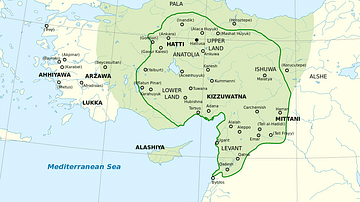
Image
Map of the Hittite Empire
A map showing the Hittite Empire in c. 1350-1300 BCE (dark green line) and at its maximum extent (light green area).
![Crates of Thebes [Painting]](https://www.worldhistory.org/img/c/p/360x202/2913.jpg?v=1732987687)
Image
Crates of Thebes [Painting]
A portrait of the Greek Cynic philosopher Crates of Thebes by an unknown painter from the circle of Domenico Feti.

Image
Spartan Woman Bronze Statue
A bronze statue, likely of a Spartan woman. c. 500 BCE. (British Museum, London)
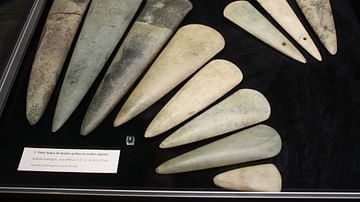
Image
Neolithic Axe Heads
Axe heads of jadeite and eclogite from the neolithic site of Carnac, north-west France. (Archaeological Museum of Carnac)
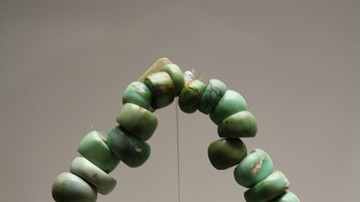
Image
Neolithic Variscite Necklace
A variscite necklace from the Neolithic site of Carnac, north-west France. (Archaeological Museum of Carnac)
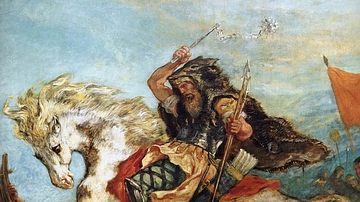
Image
Attila the Hun in Battle
Attila and his Hordes Overrun Italy and the Arts; detail from the library of the Palais Bourbon in Paris.

Image
Diogenes in Search of an Honest Man
An 18th century CE painting showing Diogenes of Sinope looking for an honest man (Johann Heinrich Wilhelm Tischbein - Nagel Auktionen)

Image
Boniface cuts down holy oak of 'Jupiter' or Donar
Boniface cuts down holy oak of 'Jupiter' or Donar.

Image
Original Saltman Mummy
The original Saltman, the first of six well-preserved bodies found in a salt mine near Zanjan, Iran. This man lived c. 1750 years ago, and his mummy was discovered by miners in 1994.
National Museum of Iran, Tehran.
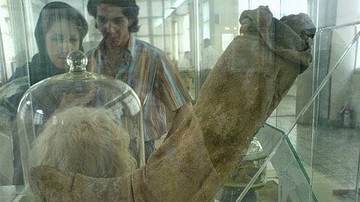
Image
Saltman's Leather Boot
The leather boot belonging the Saltman found by the miners with parts of the leg and the foot is still in the boot. The boot is displayed in the National Museum Tehran. (Image 2)